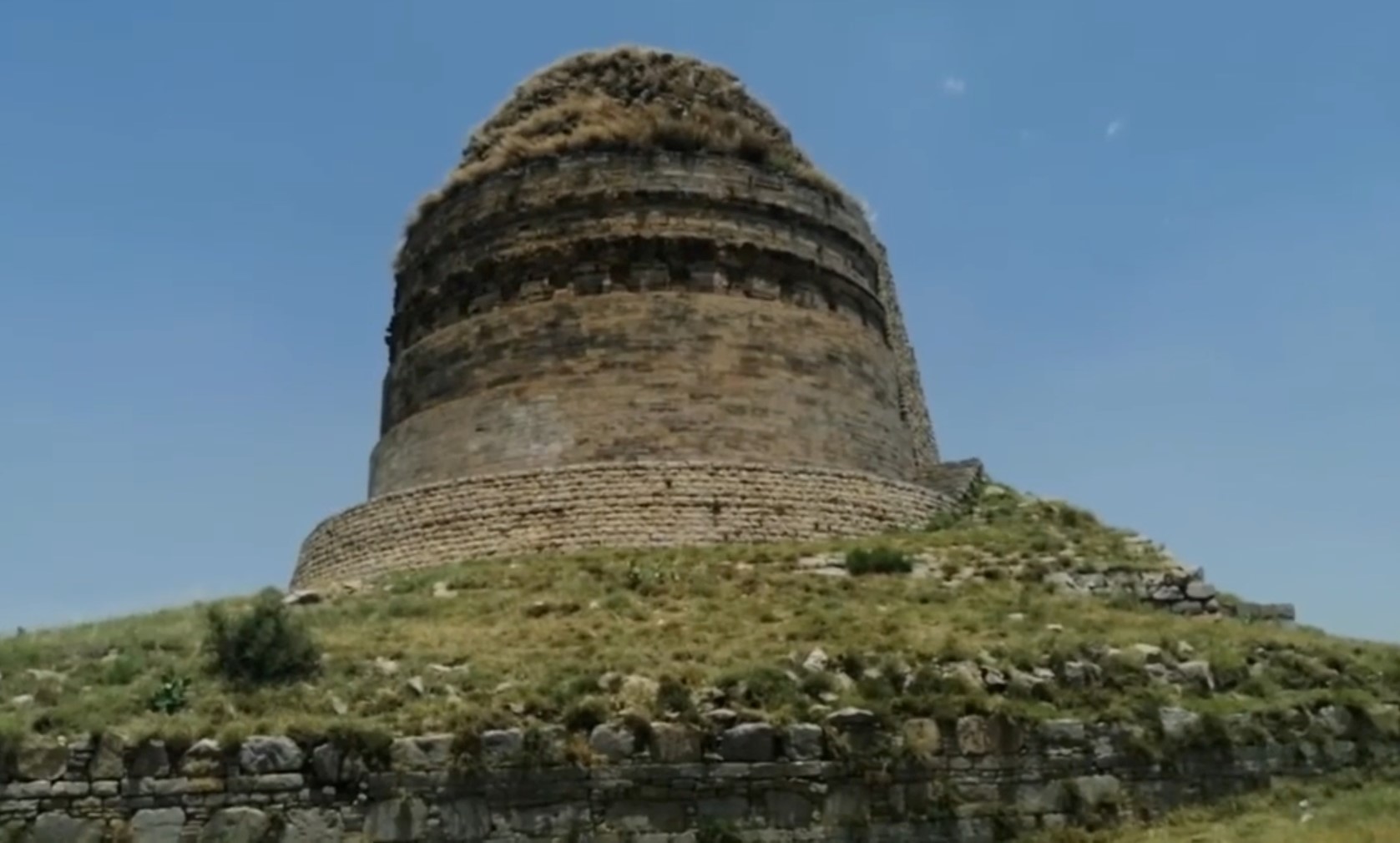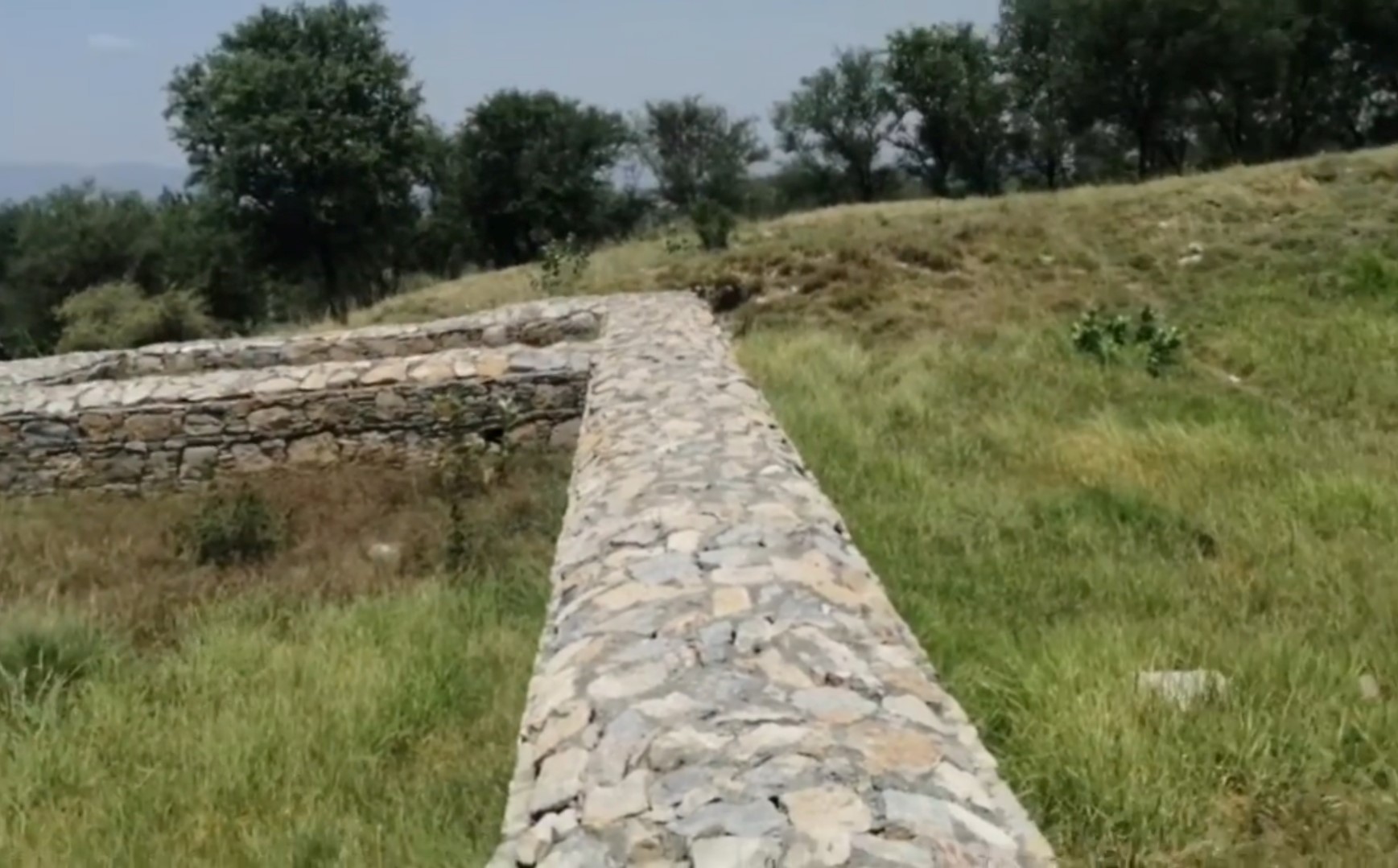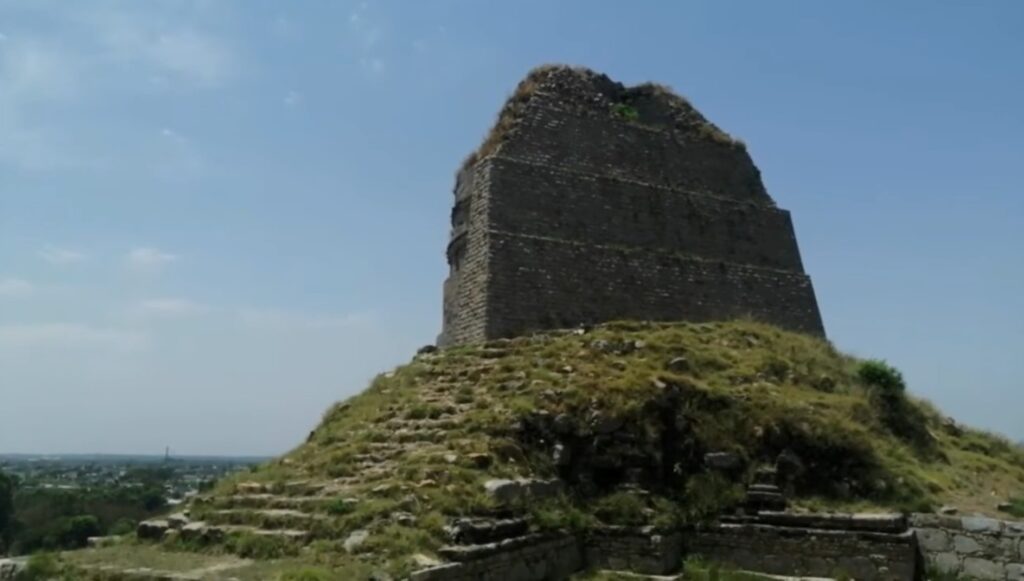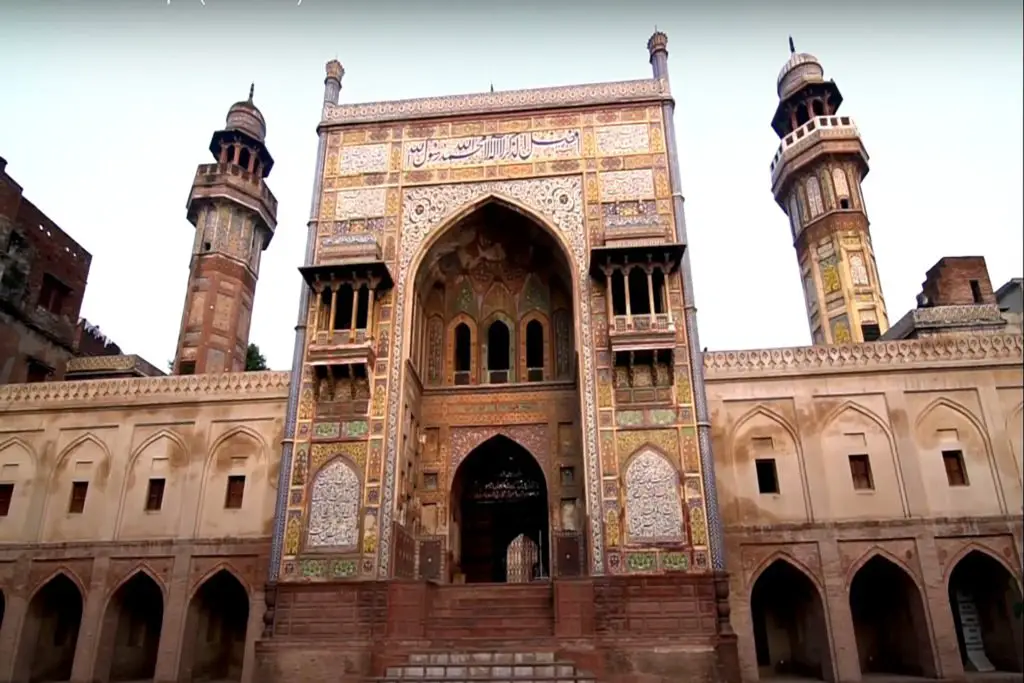The Bhallar Stupa is an ancient Buddhist monument located in the Taxila region of Pakistan. This Stupa is considered to be one of the most important Buddhist sites in the area, and it is believed to date back to the 2nd century BCE. Bhallar Stupa is located near the ancient city of Sirkap, which was once a major center of Buddhist learning and culture.
Bhallar Stupa Structure
The Bhallar Stupa is a circular structure that stands on a high platform. It is made of bricks and is covered with plaster, which has been decorated with a variety of geometric designs. The stupa has a diameter of approximately 60 feet (18 meters) and a height of about 20 feet (6 meters). The top of the stupa is crowned with a small dome, which was likely once adorned with a finial or other decorative element.
The Bhallar Stupa was excavated in the early 20th century by British archaeologists, who found a number of important artifacts and relics within the structure. These included several stone sculptures, as well as a variety of pottery and other objects. Many of these artifacts are now on display in museums in Pakistan and around the world.
 One of the most remarkable features of the Bhallar Stupa is the elaborate carvings that adorn its base. These carvings depict a variety of Buddhist themes, including scenes from the life of the Buddha, images of bodhisattvas and other deities, and intricate patterns and designs. The carvings are executed in a high relief style, with deep grooves and sharp edges that create a dramatic sense of depth and dimensionality.
One of the most remarkable features of the Bhallar Stupa is the elaborate carvings that adorn its base. These carvings depict a variety of Buddhist themes, including scenes from the life of the Buddha, images of bodhisattvas and other deities, and intricate patterns and designs. The carvings are executed in a high relief style, with deep grooves and sharp edges that create a dramatic sense of depth and dimensionality.
The Bhallar Stupa is an important reminder of the rich history and culture of the Gandhara region. It is a testament to the skill and craftsmanship of the ancient artisans who created it, and it provides valuable insights into the religious beliefs and practices of the Buddhist communities that once inhabited this area. Today, the Bhalar Stupa remains an important site of pilgrimage and contemplation for Buddhists and other visitors from around the world.
Spiritual Significance of Bhallar Stupa
 In addition to its artistic and historical significance, the Bhallar Stupa also has an important spiritual significance. According to Buddhist tradition, stupas are sacred structures that are believed to contain the relics or remains of important Buddhist teachers or other holy figures. The Bhalar Stupa is no exception, and it is believed to house the remains of one of the Buddha’s most important disciples, Sariputra.
In addition to its artistic and historical significance, the Bhallar Stupa also has an important spiritual significance. According to Buddhist tradition, stupas are sacred structures that are believed to contain the relics or remains of important Buddhist teachers or other holy figures. The Bhalar Stupa is no exception, and it is believed to house the remains of one of the Buddha’s most important disciples, Sariputra.
The Bhallar Stupa is also believed to have played an important role in the spread of Buddhism throughout the region. During the height of the Gandhara civilization, which lasted from the 1st century BCE to the 5th century CE, Taxila and the surrounding areas were home to a thriving community of Buddhist scholars, monks, and laypeople. The Bhalar Stupa and other nearby Buddhist monuments would have served as important centers of learning and worship, attracting visitors from across the region and beyond.
Today, the Bhallar Stupa is a popular destination for tourists and pilgrims who come to explore the rich history and culture of the Gandhara region. The site is maintained by the Pakistan Department of Archaeology, and visitors can explore the stupa and its surroundings with the help of trained guides. The nearby Taxila Museum also contains a number of important artifacts and exhibits related to the Bhalar Stupa and other Buddhist sites in the area.
Overall, the Bhalar Stupa is a testament to the enduring legacy of the Buddhist tradition in Pakistan and the wider region. It serves as a reminder of the rich cultural heritage of the Gandhara civilization and a symbol of the enduring spiritual values that continue to inspire and guide people to this day.







